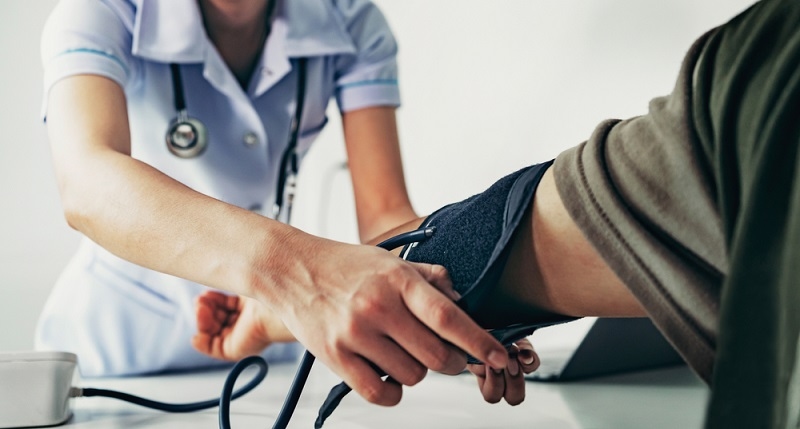Early Warning Signs of Strokes: Learn to Listen to Your Body

Strokes are a leading cause of disability and death worldwide. The key to reducing their devastating effects lies in early detection and prompt medical intervention. Your body has a remarkable way of communicating with you, providing warning signs that something might be amiss. By learning to recognize these signals, you can take proactive steps to prevent or minimize the impact of a stroke. In this blog post, we will explore the important early warning signs of strokes and emphasize the significance of listening to your body.
Understanding Strokes
A stroke occurs when the blood supply to the brain is disrupted, either due to a blockage (ischemic stroke) or bleeding (hemorrhagic stroke). Without a steady flow of oxygen and nutrients, brain cells start to die within minutes, leading to potentially permanent damage or even death. However, early detection can significantly improve outcomes and reduce the risk of long-term complications.
Warning Signs of a Stroke

Sudden Numbness or Weakness: A sudden onset of numbness or weakness, especially on one side of the body, is a common early sign of a stroke. Pay attention to weakness in your face, arm, or leg, as well as a drooping or uneven smile.
- Trouble Speaking or Understanding: If you find it difficult to speak or understand others, it could be an early indication of a stroke. Slurred speech, confusion, or trouble finding the right words are potential warning signs.
- Severe Headache: A sudden and severe headache, often described as the worst headache of your life, can be a sign of a hemorrhagic stroke. Seek immediate medical attention if you experience this symptom.
- Vision Problems: Blurred or double vision, sudden loss of vision in one or both eyes, or difficulty seeing in one or both eyes are all warning signs that should not be ignored.
- Dizziness and Loss of Balance: Feeling dizzy, unsteady, or experiencing difficulty with coordination can be an early sign of a stroke. This may include trouble walking, stumbling, or a sudden loss of balance.
- Facial Weakness: If you notice one side of your face drooping or experiencing numbness, it may be a warning sign of a stroke. Try smiling to check for any asymmetry or weakness.
Sudden Confusion or Trouble Understanding: A sudden onset of confusion, trouble understanding what others are saying, or difficulty comprehending simple instructions can be indicative of a stroke.
Learn About: Different Types Of Strokes And Their Effects
Taking Action: What to Do if You Suspect a Stroke
Time is of the essence when it comes to strokes. If you or someone around you exhibits any of the warning signs mentioned above, it is crucial to take immediate action. Here are the steps you should follow:
- Call Emergency Services: Dial emergency services right away by calling the emergency hotline in your country (such as 911 in the United States). Clearly describe the symptoms being experienced and inform the operator that you suspect a stroke. Do not hesitate or wait for the symptoms to subside. It is important to seek medical assistance as quickly as possible.
- Note the Time: Take note of the time when the symptoms started or when you first noticed them. This information is crucial for medical professionals as it helps determine the most appropriate treatment options. Certain treatments for stroke, such as clot-busting medication, must be administered within a specific time window to be effective. Providing the exact time of symptom onset will aid in determining the best course of action.
- Do Not Drive: It is unsafe to drive when stroke symptoms are present. Instead of attempting to drive yourself or the affected person to the hospital, wait for medical assistance to arrive. Driving during a stroke can put you and others at risk due to impaired coordination, vision problems, and decreased reaction times. It is best to call for an ambulance, as emergency medical personnel are trained to provide immediate care and transportation to the hospital.
- Stay with the Affected Person: If you are with someone who is experiencing stroke symptoms, it is important to stay with them until medical help arrives. Offer reassurance and comfort, and keep the person calm. Do not give them anything to eat or drink, as they may have difficulty swallowing or may choke due to weakened muscles.
Remember, every minute counts during a stroke. Quick action can potentially save lives and minimize the long-term effects of a stroke. By recognizing the symptoms, calling emergency services, noting the time of symptom onset, and avoiding driving, you can ensure that the affected person receives the necessary medical attention promptly.
Prevention and Lifestyle Changes

While some risk factors for strokes, such as age and family history, cannot be changed, there are several lifestyle modifications that can significantly reduce the risk:
- Manage Blood Pressure: Keep your blood pressure within a healthy range through regular monitoring, a balanced diet, exercise, and medication if prescribed.
- Quit Smoking: Smoking greatly increases the risk of strokes. Seek support to quit smoking and reduce exposure to secondhand smoke.
- Maintain a Healthy Weight: Obesity and excessive weight gain can contribute to various health problems, including stroke. Aim for a healthy weight through a balanced diet and regular physical activity.
- Control Diabetes: If you have diabetes, it's essential to manage it carefully. Monitor blood sugar levels, follow your treatment plan, and maintain a healthy lifestyle.
Conclusion
By recognizing the early warning signs of strokes and taking prompt action, you can potentially save lives and prevent long-term disability. Listen to your body, pay attention to any unusual symptoms, and remember that time is critical. If you suspect a stroke, don't hesitate to call for immediate medical assistance. Stay proactive in your health and make necessary lifestyle changes to reduce your risk of stroke. Your body's signals are valuable; don't ignore them.
This content was created by AI
